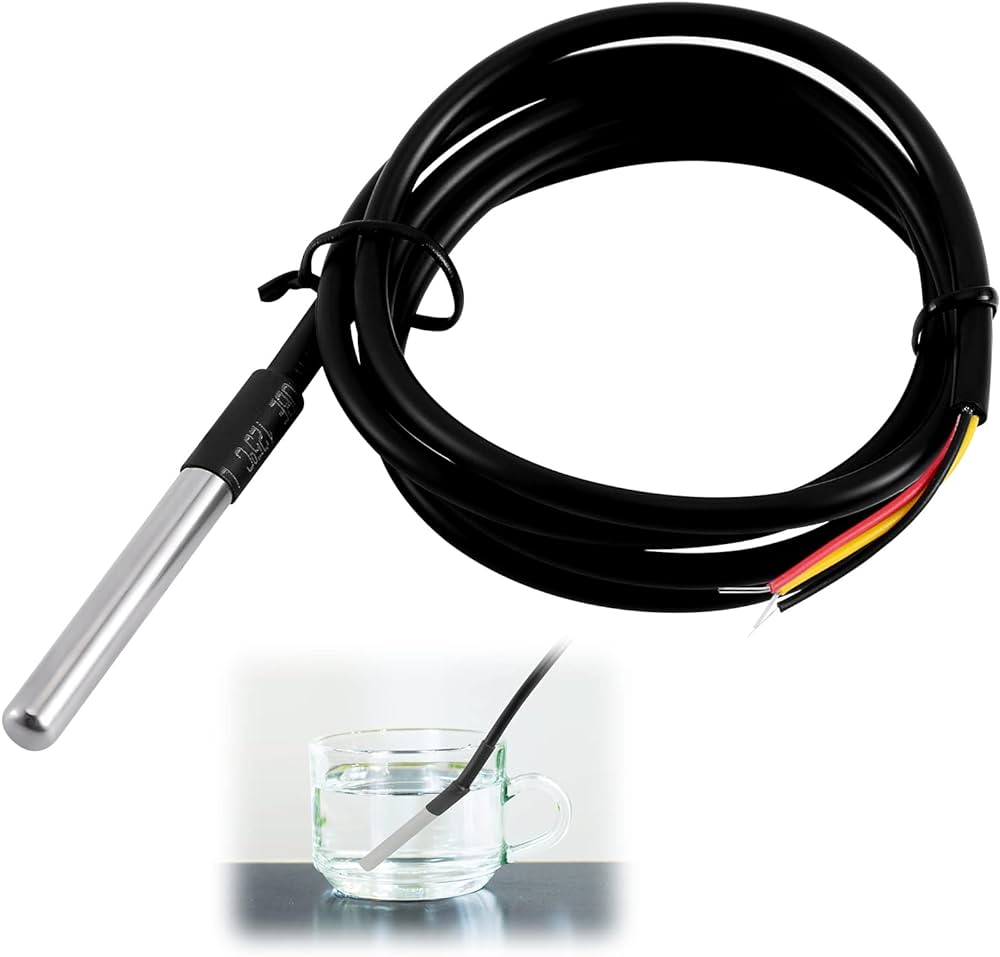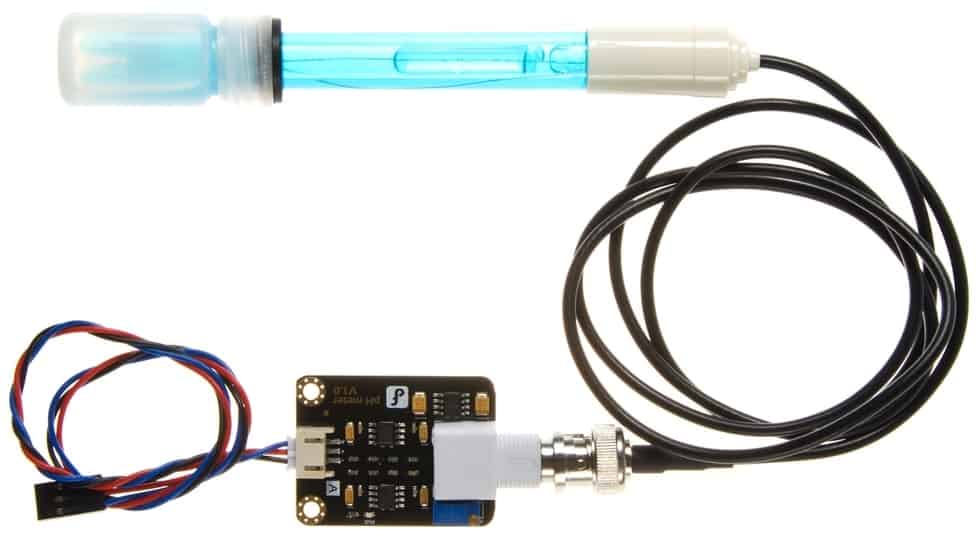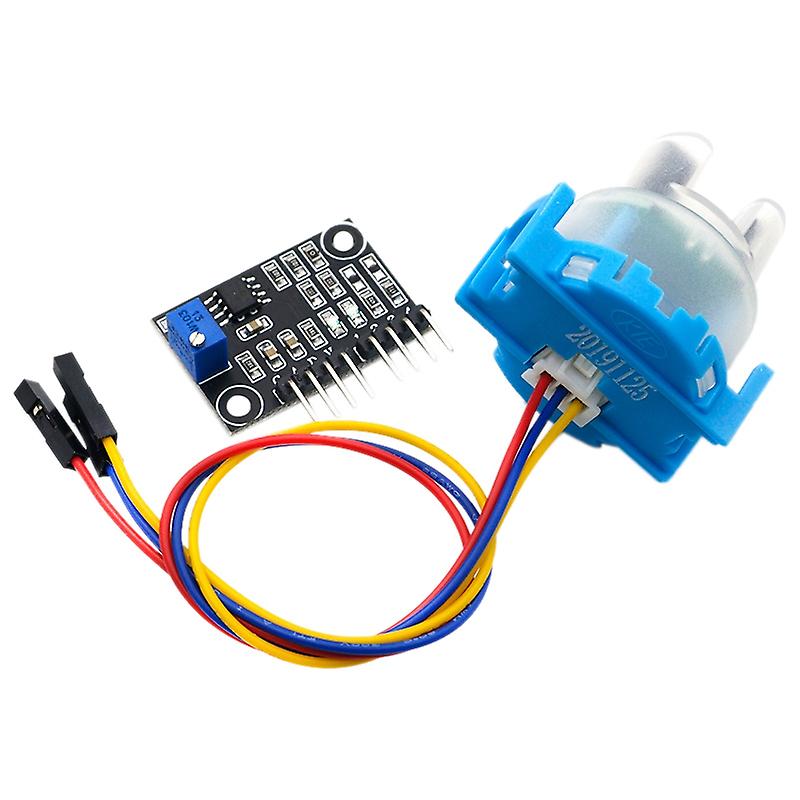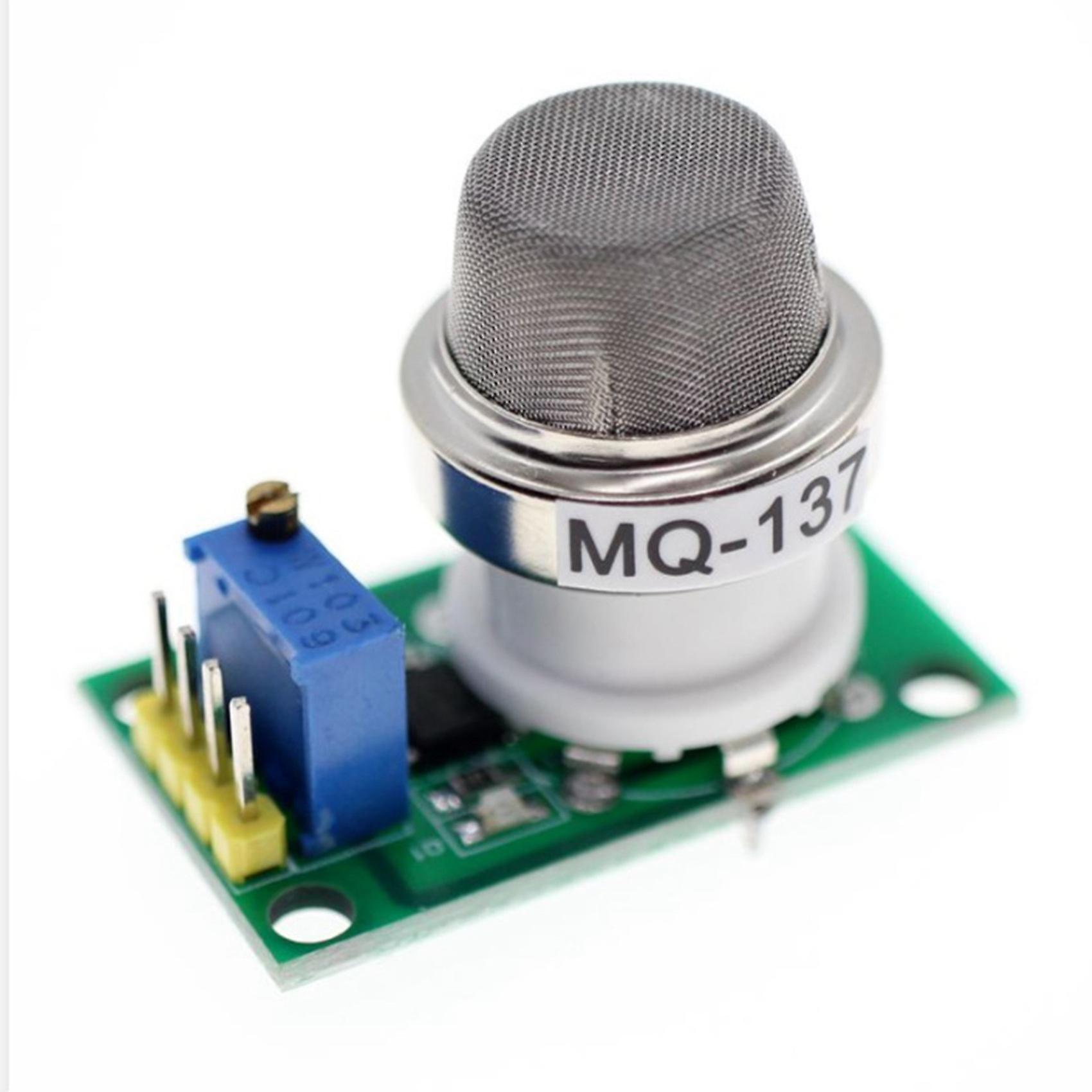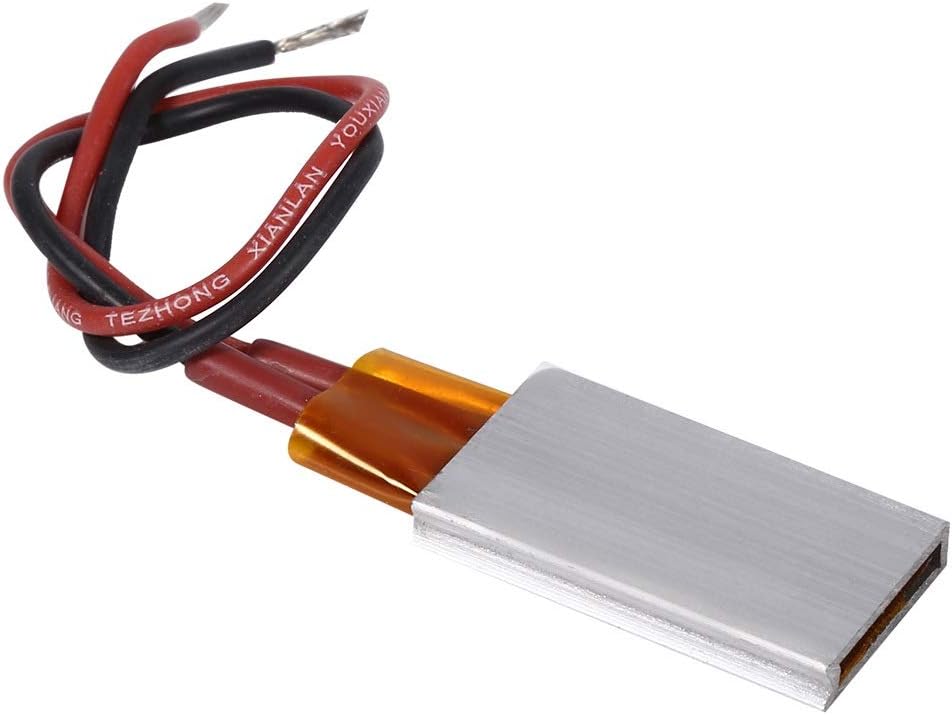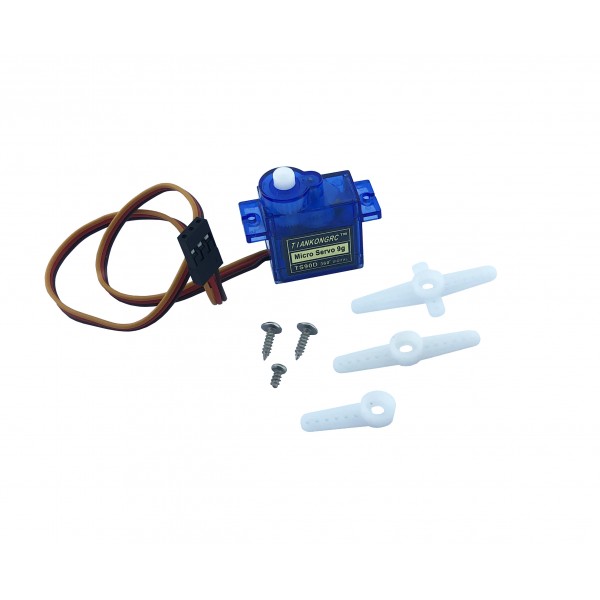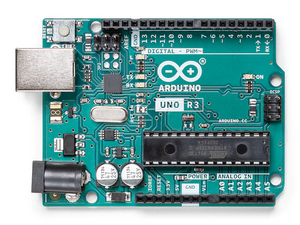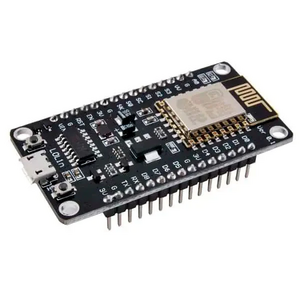PRE2023 3 Group12
Members
| Name | Student ID | |
|---|---|---|
| Aseem Mahamood | 1789767 | a.mahamood.aseem@student.tue.nl |
| Sanshray Malhotra | 1792318 | s.malhotra1@student.tue.nl |
| Nout Van Bommel | 1842110 | n.g.h.v.bommel@student.tue.nl |
| Saqib Khan | 1783432 | s.a.s.khan@student.tue.nl |
| Mara Pop | 1671820 | m.pop@student.tue.nl |
| Adrien Verriele | 1710303 | a.a.m.verriele@student.tue.nl |
Introduction
Problem Statement:
Many homeowners have aquatic pets of certain kinds either for aesthetic reasons or out of genuine compassion for the animals. The living conditions, temperature, and environment of the tank hosting the aquatic creatures must be optimal to ensure their wellbeing and the creatures are living optimally. In many cases, the owners of these pets want the well-being and happiness of their pets. However, in certain circumstances, it may be tough for them to provide optimal care due to them not having sufficient knowledge and/or time to care for them such as when they are on vacation. Certain fish species or "aquatic creatures" have strict parameters for an optimal life to ensure their well-being such as a certain water temperature, specific water PH levels or alkalinity level, or ammonia presence in the water. The most important of these factors being food, pH and temperature. For many users it can be a problem to feed on a daily basis, or to remember to test their tanks water parameters. A possible solution would be a system that takes over these basic necessities and actively controls these parameters. This will take a lot of duty away from the users. The user will get the info on an app and the system controls the pre-set values.
Objectives:
The objectives of our device are that:
- It should be slash resistant, only the sensors will get submerged.
- It should be safe for the fishes
- It should continuously collect sensor data (PH, temperature and ammonia concentration)
- It should be able to act when an issue arises
- It should inform the user via an app if there is an issue detected and state its action (high or low PH level, unstable water temperature, unsuitable ammonia concentration)
- The user should be able to set the optimal environment parameters for the aquarium (with initial recommendations for new users, maybe per species of fish)
- App should inform the user of potential solutions for the issue (if there are major issues/ problems)
- Inform the user once a time that everything is fine.
- Inform the user supplies are low (in case of pH control system, chemicals)
Users:
- Homeowners with Aquatic Pets: These users keep fish or any other aquatic creature simply for the sake of aesthetic enjoyment or as a hobby. They may have various levels of expertise when it comes to maintaining an aquarium's optimal condition, from beginners, who might lack detailed knowledge about the different needs of their aquatic pets, to enthusiasts with plenty of experience.
- Veterinary Clinics: Professionals who provide medical care or rehabilitation for aquatic animals could use the system to monitor and ensure the health of their aquatic patients.
- Educational institutions: Institutions such as schools and universities that use aquariums for educational purposes may benefit from the device to teach students about marine life care
- Maintenance Services: Experts who have to maintain aquariums for clients could use the device to provide excellent quality services while ensuring long-term health and stability to the aquariums.
What Do The Users Require:
- Ability to remotely track and monitor environmental changes such as pH, water temperature and ammonia concentration in the fish tank through an application on their phone or websites.
- Ability for them to set their own ideal parameters in the application (with suggestions of what these ideal parameters could be for certain scenarios).
- Alerts and suggestions on what to do when parameters are far from ideal.
- Autonomy and trustworthiness of the system
Planning:
The planning is provisional and will most likely change slightly to further complement with the project and the limited time.
week 2:
Specify exact scope of the project (use papers to select a project we will build upon or improve)
create plan, find feasible assignments for everyone to work on
Come up with idea/concept (everyone should think about new, out-of-the-box designs)
Functional specifications should be made based on the needs of our users, underpinned by arguments
week 3:
deadline for finishing full planning
a final design should be selected to work on
tasks should be divided for each to work on
research on parts and software
research on concepts and specifications
write formal technical specifications and requirements
week 4:
Create UML diagrams
Design user interface
Work on the wiki
week 5,6&7:
Implement software
Build hardware
Testing
week 8:
Improve prototype base on testing
Work on final presentation
Finalize prototype and wiki
Functional specifications
Must have:
Accurate sensors on pH, temperature and ammonia.
Autonomous acting on at least one parameter.
Giving users access to values and actions using an app.
Splash resistant.
Option to preset water parameters.
Automatic notification when action is needed.
Safe actuators (like chemicals or heating).
Sensors fully water resistant.
Should have:
Autonomous acting on multiple parameters.
Easy accessible application.
Autonomous feeding.
Durable electronics.
Low power usage.
Give instructions on how to fix problem.
Could have:
More parameters measured and controlled.
Implemented settings for different species of fish.
Information on different fish species.
Low production price.
Won’t have:
Fish tracking on movement and eating cycle.
Long term data storage.
Actuators/sensors on all important water parameters.
Design
The choice has been made to make a all-in-one connected fish tank automation system. The system would keep track of the water temperature, pH, turbidity and ammonia levels. Temperature would be adjusted automatically with the activation of a heater if it falls below a threshold. Furthermore the system would dispense a certain amount of fish food at a certain frequency given by the user. The system would be a box to be attached at the top of a wall of the tank, just above the water. Temperature, pH, turbidity and ammonia sensors, as well as the heater would at the bottom of the system, submerged in the water. Inside of the box would be a microcontroller, a wi-fi module, and the food dispensing system, composed of an Archimedes screw controlled by a servo motor and a food tank.
This system would be coupled with a mobile app, on which the user would be able to see the parameters in real time and be notified if one of them is out of its normal range, with advice to fix them. The user would also be able to input parameters to decide on the quantity and frequency of food dispensed.
Sensors
Temperature Sensor
An appropirate temperature sensor would be the DS18b20 waterproof temperature sensor, this is waterproof and is compatible to use with Arduino IDE. It requires a breadboard / soldering of wires (to be done at a later stage). This temperature sensor has three wires which all connect to a different pin in the Arduino. The black pin connects to a ground port, red pin connects to a VCC port which is powered by either 5v or 3.3v power supply. The yellow pin is connected to any chosen digital IO pin on the Arduino. The connections can be made using a breadboard or by using jumper wires with soldering of the loose wires on the temeprature sensor to the jumper wires (and then connecting the jumper wires to the Arduino itself). The coding with this sensor is relatively straightforward and involves using the libraries <OneWire.h> and <DallasTemperature.h>. A simple call to an in built method of the libraries after proper setting up (the call is sensors.requestTemperatures()) checks the temperature of the water the temperature sensor is inside and the values can be retrieved by calling: sensors.getTempCByIndex(0).
For more information see:
https://www.sensingthecity.com/water-temperature-sensor-with-arduino/
Possible purhcasing link(s):
https://www.hobbyelectronica.nl/product/ds18b20-waterdicht/
_
PH Sensor
An appropirate PH sensor would be the Gravity analog PH sensor kit. This contains a PH probe and a signal conversion board. The PH probe is what is immersed in the liquid which is being tested for it's PH value whereas the signal conversion board acts like a communication mechanism between the PH sensor and the Arduino board, sending the read PH values to the Arduino. The wiring of this is as follows: the blue wire on the image on the right should be connected to any digital IO pin on the Arduino, the red wire requires to be connected to a 5V VCC pin and the last black wire should be connected to a ground pin. The connections are easier to be made using female to male jumper wires. The code works by setting the chosen digital IO pin to HIGH and LOW and using a formula to calculate the PH based on the transmitters response.
For more information see:
https://how2electronics.com/ph-meter-using-ph-sensor-arduino-oled/
Possible purchasing link(s):
https://store.arduino.cc/products/gravity-analog-ph-sensor-meter-kit
https://elektronicavoorjou.nl/product/ph-sensor-kit-v2/
_
Turbidity Sensor
This is a sensor to check the "clearness" of the water. There are two types of turbidity sensors which are linked below, both principly work the same. Turbidity is measured in terms of NTU which is a "Nephelometric Turbidity Unit". The lower this NTU value the better the water quality, higher NTU values mean worse water quality as there is an increased scattering of light (more particples and dirt in the water). The connections are simple but differ based on the turbidity sensor purchased in principle it requires a 5V VCC pin, a ground pin and any digital IO pin on the Arduino. The code works by running a for loop over 800 iterations to read the required sensor input which the result of the input is added to another local variable. After this the value is converted to NTU and can be viewed on the serial monitor or an external LCD (optional, not for our project).
For more information see:
https://www.esclabs.in/how-to-make-a-turbidity-meter-using-arduino/
https://www.youtube.com/watch?v=Bu8y-6Bpv0U
https://how2electronics.com/diy-turbidity-meter-using-turbidity-sensor-arduino/
Possible purchasing link(s):
https://elektronicavoorjou.nl/product/troebelheid-sensor/
_
Ammonia Sensor
The most suitable sensor to detect any ammonia presence in the fish water is the Mq137 ammonia sensor. Before using this sensor it must be calibrated to the environment around it therefore using an external program to do so. The wiring is simple in principle it requires a 5V VCC pin on the arduino to be connected to the VCC pin on the sensor, a ground pin on the arduino to be connected to the GND pin on the sensor and any digital IO pin on the Arduino to be connected to the AO pin on the sensor. A 47k ohm resistor is also needed to be used for the connection between the AO pin on the sensor and any digital IO pin. The code works by taking in the parameters set above after calibration and thereafter uses a logarithmic formula to calulate the PPM (parts per million) of ammonia present in the air around (also can measure ammonia in water, it is important to not put the sensor underwater).
For more information see:
https://circuitdigest.com/microcontroller-projects/arduino-mq137-ammonia-sensor
https://www.reddit.com/r/arduino/comments/fvspdn/working_on_a_project_with_ammonia_gas_sensor/
Possible purchasing link(s):
Actuators
Heater Plate
This is need for the "actuator" side of our autoamted fish care system. This heater plate will turn on whenever necessary (when the temperature of the aquarium is detected to be too high) and thereafter it will stay on until the temperature of the aquarium has reached the desired temperature. This works simply by connecting to an external 12v power source (so just a plug point), this will have to be controlled (turned on or off) by an external switch connected to the arduino to control this. It cannot be connected directly to the Arduino as the Arduino only supports providing power upto 5v hence this heater plate requires 12v. The arduino code will be simple logic ie (if sensors.getTempCByIndex(0) <= threshold1 THEN switch.on() and thereafter if sensors.getTempCByIndex(0) >= threshold2 THEN switch.off()).
For more information see:
https://www.electroniclinic.com/12v-dc-heater-plate-80w-ptc-heater-plate-12v-solar-heater/
https://www.youtube.com/watch?v=eWrkHLmWQJU
Possible purchasing link(s):
https://www.amazon.nl/-/en/Heating-Thermostat-Aluminum-Tempering-Optional/dp/B07Y5DKHBH
_
Servo motor
For the precise quantity of food to be dispensed a part must be moving for a certain amount of time to push or release the food into the water, and then stop. After some research it appear that a common way to achieve that is with an Archimedes screw rotated by a servo motor for a specific amount of time. This method as several advantages: it provides a continuous flow of food, such that any desired quantity can be precisely delivered, it only takes a small amount of space, and is relatively easy to implement as 3d models of Archimedes screws compatible with servo motors are available online. The servo motor can be directly connected to an Arduino via a 5V VCC and a ground pin. It is controlled very precisely, which allows for a very specific amount of food to be dispensed. It then suffices to write a line of code that sends power to the motor pin for a certain amount of time every x seconds, which are to be determined based on parameters given by the user (number of fishes, size of fishes...).
For more information see:
https://en.wikipedia.org/wiki/Servomotor
https://www.youtube.com/watch?v=tHOH-bYjR4k
Possible purchasing link:
Microcontroller and communication
Microcontroller
A microcontroller is needed to activate the actuators based on the data received by the sensors and the user. A very popular line of products for this kind of projects is the Arduino line, which provides rather cheap microcontrollers that are very modular and compatible with plenty of sensors and actuators via serial communication with pins. The most popular Arduino model is the UNO Rev3 which is based on a ATmega328P processor with 14 digital and 6 analog inputs/outputs. However it does not have built-in wi-fi, so another module such as the ESP8266 must be connected to it. Another option would be the Arduino Uno R4, which directly has wi-fi connectivity. Both products are compatible with the Arduino IDE software that is used for development, with a simple language to control the pins.
For more information see:
https://store.arduino.cc/products/arduino-uno-rev3
https://store.arduino.cc/collections/boards-modules/products/uno-r4-wifi
Possible purchasing links:
_
Wi-fi module
In order to communicate with the mobile app the device must have a way to send and receive the data. A common way to achieve this with an Arduino is with the use of an ESP8266 module for Arduino. This modules enables wi-fi transmission and then transmits the data via serial communication to the microcontroller. Wi-fi is ideal for our user target group because personal fish tanks are generally in houses, meaning that a router will always be nearby to send the data over the internet. Another option would be to directly use an Arduino model that has wi-fi connection integrated, such as the Arduino Uno R4.
For more information see:
https://docs.arduino.cc/arduino-cloud/guides/esp32/
https://docs.arduino.cc/hardware/uno-r4-wifi/
Possible purchasing links:
State Machine Diagram
On the right hand side we see our initial approach at our automated aquarium manager represented clearly using a state machine diagram. In this initially the manager is off and when it is turned on (assuming there is power) it sends a notification to the user that it is on. It stays in a so called "checking state" in which the sensors are continuosly run until an issue is detected. For example if the temperature is too low, it exists the checking state (which turns off all the sensors), and enters the heater on state which turns on the heaters and only exits this state when the target temperature is reached (the event temphigh is met) then it turns off the heater. Similarly whenever the ph is too low it goes to the PHLow state subclassed in PHControl and releases the required chemicals to improve the ph and thereafter it goes back to the checking state (similar for PHHigh). Whenever there is high ammonia concentration detected it sends a notification to the user about this so it can be resolved as soon as possible in the NotifyAmmonia state subclassed in Notify User, once this notification is sent it goes back to the checking state again (similar for NotifyDirt). It ensures these NotifyUser substates are only entered if the notification hasn't already been sent (otherwise it will keep sending the same notification again). In the do/ in the checking state we check if the user has resolved the notification about high ammonia / dirt until we activate sending a notificiation for that issue again.
State-Of-The-Art
(could be sorted to different sub-groups, some pictures maybe)
Sources With Summaries
Automated Monitoring System for the Fish Farm Aquaculture Environment
The paper introduces a method for fish farmers to actively control their farm. They introduce a problem of waste, unnecessarily created by a lack of monitoring their fish. The waste can be reduced by actively tracking the fish and feeding when needed. They also state that, for optimal farming, the conditions in such a tank should be kept at certain rates. The team establishes a device to monitor the data acquired, using simple but accurate sensors. They describe a way to measure the most important values and how they created a system available for the user. They create a software program that runs on android devices to give the farmers access to the results, and create a space where the farmers can change certain values based on the fish their needs. The paper doesn’t specifically state for which levels the system is made, and what would be optimal for certain species. The energy management of the system is very efficient, and because of the WIFI implementation they created an accessible system.
Design and implementation of a smart monitoring system for water quality of fish farms
The paper focusses on the creation of a monitoring system for fish farms. The authors try to give real time information to the farmer via a mobile app. They see the rapid change in the health and agriculture sector towards a fully monitored and perfected system. The authors use an Arduino UNO and a pH and temperature sensor to monitor the values in the tanks. The user can use his phone with a Bluetooth connection to connect and get the real time information on their mobile device. There are some major improvements that could be made compared to this project. The information is quite limited and could be extended on. Also we could try to implement a more autonomous system that does certain tasks like changing pH or giving food. The system could also be upgraded to be more up to date and accessible.
Aquarium Monitoring and Automatic Feeding System Based on Internet of Things
https://ojs.unikom.ac.id/index.php/injuratech/article/download/10012/3770/
This article focuses on creating aquarium monitoring and automatic feeding systems for ornamental fish tanks and fish farms to support this high demand industry in Indonesia. The project focuses on 3 sensors and 1 actuator, namely the temperature sensor, pH sensor and turbidity sensor and a servo motor for the automatic feeding system. The idea is to have this system work togeather with a smart phone application that has 3 panels. A home screen that displays weather information for outdoor systems as well as displaying the feeding schedule and options to adjust it. The second panel focuses on monitoring the environmental data such as displaying temperature, pH and turbidity data. The final panel focuses on sharing the data and/or generating reports to be exported.
Aquarium Monitoring System Using Sensors
https://ajast.net/data/uploads/10119.pdf
This paper addresses the issue of fish tank maintenance time for homeowners and possible inconveniences it causes. The solution proposed is a fully automatic system that feeds the fish, monitors and displays temperature and a water circulating system with the additional function of heating that controls water temperature. This process of heating water when its circulating through pipes instead of directly adding a heater to the tank water allows for better and consistent temperature control. The fish feeder works with a simple servo motor and container controlled by an Arduino.
Monitoring the Value of Water Quality and Condition Parameters Using the Open Sensor Aquarium
https://iopscience.iop.org/article/10.1088/1742-6596/1255/1/012036/pdf
This research paper details a complete fish tank management system that collects data, betters the fish tank environment parameters and displays the information on a webpage. The system consists of sensors such as a CS-CO057 water level sensor, pH sensor, DS18B20 temperature sensor and analog electrical conductivity sensor that is all connected to an Arduino that sends the data to the server using a SIM900 transmission module. The actuators are a water heater that responds to temperature changes detected and an automatic feeder that operates at scheduled times. This system was tested for long term use.
A multi-functional fish tank remote monitoring system based on STM32
https://francis-press.com/papers/7016
This research paper focuses on a system suitable not only for ornamental fish tank keepers but also fish farming enthusiasts. Apart from the typical sensors such as temperature, turbidity, pH and water level sensors, this system also comes with a camera module and voice module to cater to the ornamental fish breeding and training aspect. All the sensors are connected to the STM32 core controller which is also connected to actuators such as servo motors for feeding and a wireless transmission module for sending data to be remotely accessed.
Smart Aquarium Management System
https://www.researchgate.net/publication/345690191_Smart_Aquarium_Management_System
The paper discusses the development of a Smart Aquarium Management System designed to automate and remotely monitor aquarium conditions, including temperature, pH levels, feeding schedules, and aeration through an IoT-based solution. The system aims to reduce manual maintenance efforts by allowing users to control and monitor their aquariums via mobile application, ensuring optimal living conditions for fish. It also aims to replicate natural conditions as closely as possible, ensuring the health and well-being of fish and other aquatic organisms. This innovation addresses challenges faced by aquarists, such as feeding fish during absences and maintaining water quality, by providing real-time data and controls through a user-friendly interface.
Implementation of Smart Aquarium System Supporting Remote Monitoring and Controlling of Functions using Internet of Thingshttps://www.researchgate.net/publication/337567490_Implementation_of_Smart_Aquarium_System_Supporting_Remote_Monitoring_and_Controlling_of_Functions_using_Internet_of_Things
The article presents the implementation of a smart aquarium system that uses Internet of Things (IoT) technology for remote monitoring and control of aquarium functions. It introduces a fully automated system capable of operating without human intervention, focusing on features like mechanical fish feeding over the internet and monitoring parameters such as feed level, water temperature, pH, and water level remotely. The authors use various tools such as Arduino Mega 2560, ultrasonic sensor, ESP8266, LCD 20x4, PH sensor, temperature sensor, water pump motor, servo motor, four-channel relay module, water heater, and fan. These components work together to automate and remotely manage aquarium conditions, enhancing efficiency and facilitating non-intrusive care for aquatic life.
A Review of Smart Fish Farming Systems
The paper provides an in-depth look at the application of AI in aquaculture engineering, focusing on the use of Artificial Neural Networks (ANN) to enhance water quality management for fish farming. It highlights the potential of AI to automate the monitoring and adjustment of critical parameters such as salinity, oxygen levels, pH, and temperature, ensuring optimal conditions for aquaculture. This integration aims to increase efficiency, reduce costs, and promote sustainable practices within the fish farming industry, demonstrating a significant advancement in aquaculture technology.
Intelligent Fish Tank Based on WiFi Module
https://front-sci.com/journal/article?doi=10.32629/jai.v1i1.16
The paper presents an innovative intelligent fish tank system that leverages a WiFi module for remote monitoring and control via an Android smartphone. Utilizing the STC89C52 microcontroller as its core, the system employs sensors to track water temperature and level, adjusting the latter as needed and allowing users to interact with the tank in real-time from anywhere. This approach showcases the practical application of IoT technologies in enhancing the care and management of aquatic environments, demonstrating significant advancements in home automation and smart device integration.
An Intelligent Behavior-Based Fish Feeding System
The paper discusses an adaptive smart fish feeder system that adjusts feeding times and amounts based on observed fish behavior, aiming to solve problems associated with traditional feeding methods in aquaculture. This innovative system is expected to enhance fish welfare by reducing food competition and waste, thereby improving water quality. The study highlights the potential for increased farm productivity and efficiency through customized feeding strategies informed by fish responses, suggesting significant advancements in aquaculture practices.
Recent Advancement of the Sensors for Monitoring the Water Quality Parameters in Smart Fisheries Farming
https://www.mdpi.com/2073-431X/10/3/26
The paper discusses the use of machine learning method such as K-Nearest Neighbors, Random Forests, Decision Trees, Regression and Principal Component Analysis to categorize the quality of water for fishes. It proposes water temperature, pH, nitrites and nitrates, phosphorous, calcium, magnesium and dissolved oxygen as input parameters for these methods. The paper then proposes a system consisting of two water pumps controlled by a pump controller, a nitrate sensor and an impedance analyser as well as other sensors for all the parameters, all of this controlled by an arduino UNO. The system uses a LoRA shield for communication and is powered with a 12W solar panel and a battery. The collected data is sent on a cloud server to be analyzed on a user application. The estimated cost of the prototype is USD 250.
Water Quality Monitoring System for Fisheries using Internet of Things (IoT)
https://iopscience.iop.org/article/10.1088/1757-899X/1176/1/012016
The paper discusses the use of the Internet of Things to monitor fish and water in a fish production pond. It proposes a system with temperature and pH sensors, as well as a ultrasonic sensor for fishes controlled by an NodeMCU microcontroller and a ESP8266, which sends the data via wi-fi to a Blynk database that also sends notifications by e-mail. The conclusion of the experiment conducted with this system is that such an IoT device is able to efficiently track the quality of water for fishes, though some adjustments could be made to improve it, such as having a better user interface to track the data, adding more parameters in defining the quality of water, and using LoRaWAN for communication.
Design and Deployment of Low-Cost Sensors for Monitoring the Water Quality and Fish Behavior in Aquaculture Tanks during the Feeding Process
https://www.mdpi.com/1424-8220/18/3/750
The paper discusses the use of low-cost sensor for monitoring fishes and water in fish farms. The proposed system monitors water quality parameters, tank status, feed falling and fish swimming behavior. It uses a thermistor type negative temperature coefficient (NTC) temperature sensors, an inductive sensor for measuring conductivity an optical turbidity sensor and IR photodiode oil sensor. These are controlled by an Arduino MEGA with an ESP8266 wi-fi module. The system also uses smart protocols to send only the relevant information over the network to reduce energy waste. The estimated total cost for sensors is less than €90.
Development of Domestic Animals Shelter Environment Monitoring System using Internet of Things (IoT)
https://ieeexplore.ieee.org/document/10169332
This paper addresses the problems that occur in domestic animal shelters. They propose a solution using a system to control and measure certain parameters in those shelters. Using sensors and a microcontroller, the Arduino, they monitor the temperature, humidity, motion and gas levels. This is send to a blynk application where a farmer can view real-time values and get alerts when certain events occur, like high gas levels. The system also regulates the water and temperature in a shelter, by continually checking values and responding. The author states there can be a lot of improvement, like implementing more and better sensors.
IoT-Based Fish Farm Water Quality Monitoring System
https://www.mdpi.com/1424-8220/22/17/6700
This paper proposes a system to monitor water quality in fish farms. The system uses a robotic arm to submerge and take the sensors out of the water. The temperature sensor uses the constant voltage method and a low pass filter to reduce temperature noise drift and improve the accuracy. It also uses a water overflow sensor to prevent water from overflowing which could allow fishes to escape the tank. The system also monitors pH and dissolved oxygen. Finally, it uses LoRa for the wireless communication. The authors suggest to to improve the system with the use of deep learning and machine learning to better analyze the water quality.
Water Monitoring IoT System for Farming Ponds
https://stumejournals.com/journals/i4/2018/2/77.full.pdf
This paper describes an IoT system for monitoring water quality in fish farms. It uses an arduino MEGA2560, a temperature and water level sensor, as well as a clock. It controls a heater and lights to adjust the water temperature, displays the information on a LCD screen and notifies the user with a buzzer. It also uses the Wivity modem to provide internet connectivity. this module also implements a complete internat protocol stack to send data via HTTP to a cloud server. The authors suggest using more sensors to monitor other parameters such as dissolved oxygen or pH.
Aquaculture monitoring and control system: An IoT based approach
https://www.ijariit.com/manuscripts/v5i2/V5I2-1706.pdf
The paper proposes a distributed system for monitoring water turbidity, temperature and pH. The system is modular, portable and low-cost. It uses turbidity, temperature water level and pH sensors connected to a Raspberry PI. The data is sent to a cloud database and can then be retrieved via a mobile app. With the app users can also control the water flow and receive notification when the data exceeds a given threshold range. The system uses the ThingSpeak API to send the data onto the cloud. The conclusion of the experiment ran with the system is rather positive towards to use of IoT in fish farms.
Microcontroller Based Water Treatment Scheme for Fish Farming
https://ieeexplore.ieee.org/document/10406986
This paper sees the big growing market of fish farmers and highlights how we should implement todays technology into these farms to control and improve quality. They give multiple optimal parameters for multiple species of fish. The sensors used are all viable in these conditions. Their design focusses on temperature, pH and turbidity. Using an Arduino Uno and a GSM module, they create a system to track and monitor the values inside such fish tank. Chemicals can be used to control pH and a filter for the turbidity. They use multiple chemicals to lower or higher pH levels. The paper only gives a brief idea on how such structure should look, not creating a solution. Using the authors plans we could build such system, or parts.
Design and Analysis of IoT-based Aquarium Monitoring System for Guppy Fish Habitats
https://ieeexplore.ieee.org/document/10010912
This paper focusses on the improvement of health of guppy fish. They state that, following past research, optimal water quality is key to maintaining health fish. Using IoT, which has become more and more important due to the ability to transfer data between all kinds of devices, They want to reduce cost, work and time for fish owners. Using sensors for pH, turbidity and temperature, they create an system to test values in a tank and send them to a mobile device. With their system they test the impact of food types on the water quality and find that BBS type foods are better than pallet type foods. Furthermore they are able to create a simple but useful program to monitor the values in such fish tank. An improvement could be made on the amount and quality of sensors, or on the user interface, using a modern style app.
Aquarium Water Quality Management
https://www.researchgate.net/publication/268195853_Aquarium_Water_Quality_Management
This paper talks about fishes basic needs to live in aquarium water and the quality of the water. It provides data and insights on the optimal PH, oxygen, hardness, chlorine, temperature, salinity, hardness and more of the water for distinct fish species for their optimal survival and also for breeding purposes. Furthermore, there are tips for cleaning the water and resolving any conflicts regarding the water quality.
Aquarium Water Quality Management for Freshwater Ornamental Fishes
The research paper above provides insights on optimal water chemistry for the health of aquarium fish. It emphasizes the importance of a very specific amount of chlorine for optimal wellbeing of the fish (in a range), tips for cleaning and removing chlorine is present as well as other filteration techniques to remove other waste. Furthermore, for healthy fish they emphasize on regular water cleanings with not execeeding threshold for water changes to put less stress on the fish and to apply certain instruments or minimize the "noise" in the aquarium overall.
Automatic Water Quality and Fish Feed Monitoring System in Aquarium Using LORA
This article talks about how the growth and development of certain types of fish is influenced by factors such as the water temperature, PH level, quality of food and water turbidity. It mentions the importance of feeding and how some owners forget to or are unaware of this and to the quality of the water and condition of their fish tank. They have used an Arduino UNO microcontroller to build a system to feed the fish and maintain good water coditions. It mentions a PH of 6-8 is ideal alongside a temperature of 23-30 degrees celcius and water turbitity of 0-2500 NTU. LoRa SX1278 is used as a communicator service alongside a turbidity sensor and a DS18B20 temperature sensor, PH sensor, RTC, relay and a water pump. The sensors equipped continuosly monitor the water conditions using the LoRa and if the condition of the water is not to standard, the water pump is turned on.
Seneye POND V2 - monitoring system for ponds
https://www.marine-aquatics.eu/en/seneye-pond-v2-monitoring-system-for-ponds?ItemIdx=2
Article details existing product that monitors the PH level inside of a koi pond. Ammonia poisoning is one of the factors that cause the death of fish. The software automatically monitors the inside of the pond to detect toxic ammonia (NH3) traces at very low levels. The product is also able to detect swings in PH and temperature which could be harmful for the health of the fish. The device can be placed inside of a filter or can be set to float atop the pond.
Design of water quality monitoring system for aquaculture ponds based on NB-IoT
https://www.sciencedirect.com/science/article/abs/pii/S0144860919301189
Article details a project based on Narrow Band Internet of Things technology. enables remote collection and storage of data from multiple sensors such as temperature, pH, dissolved oxygen. It also provides centralized management of breeding ponds. The system described in the article uses the STM32L151C8 microcontroller and sensor terminal. This gives it real-time data acquisition, the data is then aggregated and transmitted over large distances to a IoT cloud platform through NB-IoT. The system has been tested in ChangZhou, JiangSu, China. The test demonstrates the system's ability to acquire water quality parameters on time with high degree of accuracy and reliability, this provided strong support for aquaculture production management and water quality regulation. A similar idea could also be implemented in order to monitor the parameters for an appropriate environment for fish across a spread out network of fish ponds.
Logbook
| Week | Student | Work Done | Total Time |
|---|---|---|---|
| 1 | Saqib | Intro Lecture (2 hrs), Setup Wiki (0.5 hrs), Worked On Introduction (2 hrs), Research Papers And provided Summaries (1 hrs) | 6.5 hrs |
| Mara | Worked on "Users" (0.5 hrs), Researched papers and provided summaries (3h) | 3.5 hrs | |
| Aseem | intro Lecture (2 hrs), worked on / edited introduction (1 hrs), read papers and added summaries (3 hrs) | 6 hrs | |
| Adrien | Intro Lecture (2 hrs), Researched papers and provided summaries (3hrs), Plan and milestones (0.5hrs) | 5.5 hrs | |
| Nout | Intro Lecture (2hrs), worked on introduction and planning (2h), read papers and make summaries(3hrs) | 7 hrs | |
| Sanshray | Intro Lecture (2 hrs), Researched papers and wrote summaries (2 hrs) | 4 hrs | |
| 2 | Saqib | Meeting (2 hrs), Research and summary of sensors (5 hrs), Worked on state machine diagram (2 hrs) | |
| Mara | |||
| Aseem | |||
| Adrien | Feedback session (0.5 hrs), meeting (1.5 hrs), Research on sensors, actuators and design (6 hrs), report on wiki (4 hrs) | ||
| Nout | |||
| Sanshray | |||
| 3 | Saqib | ||
| Mara | |||
| Aseem | |||
| Adrien | |||
| Nout | |||
| Sanshray | |||
| 4 | Saqib | ||
| Mara | |||
| Aseem | |||
| Adrien | |||
| Nout | |||
| Aseem |
